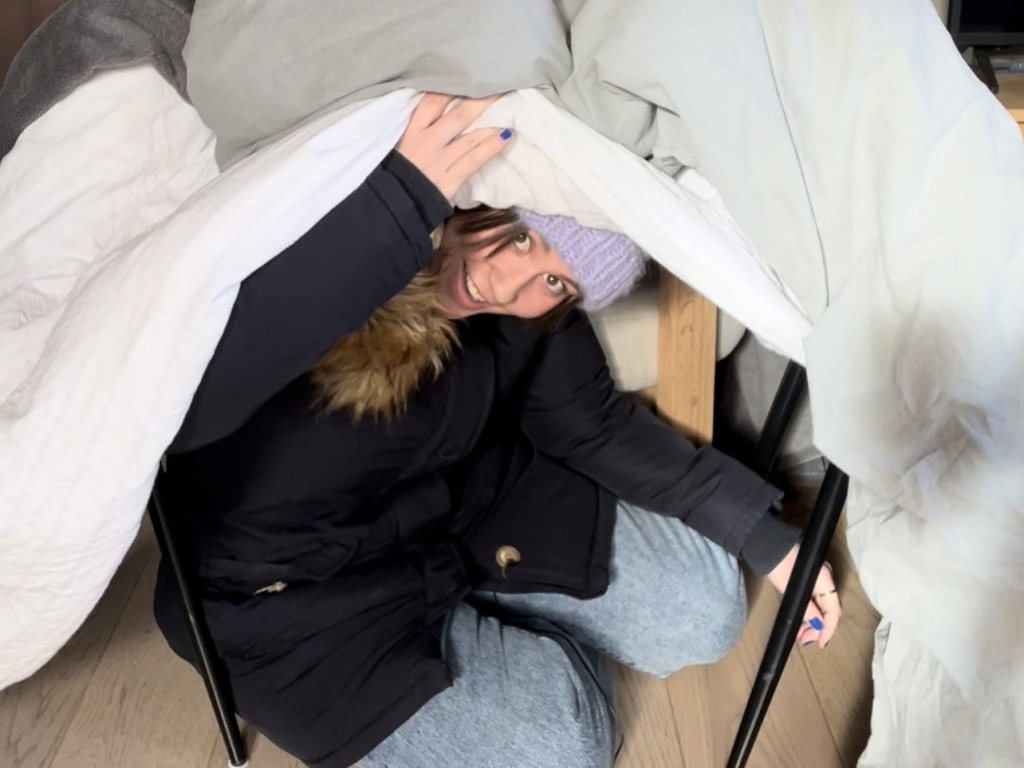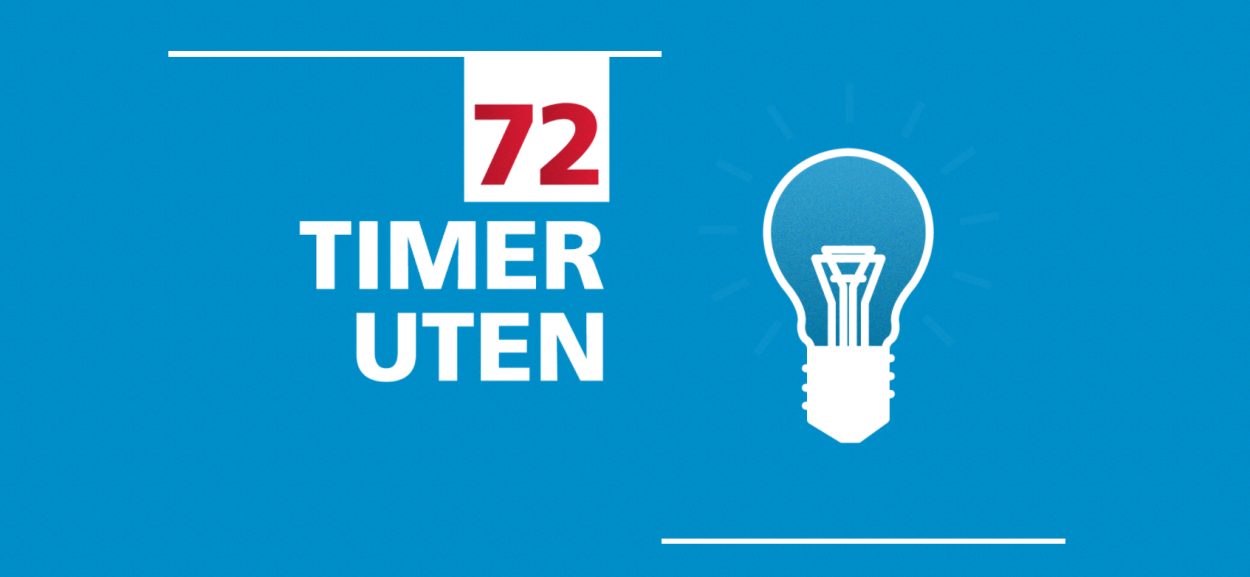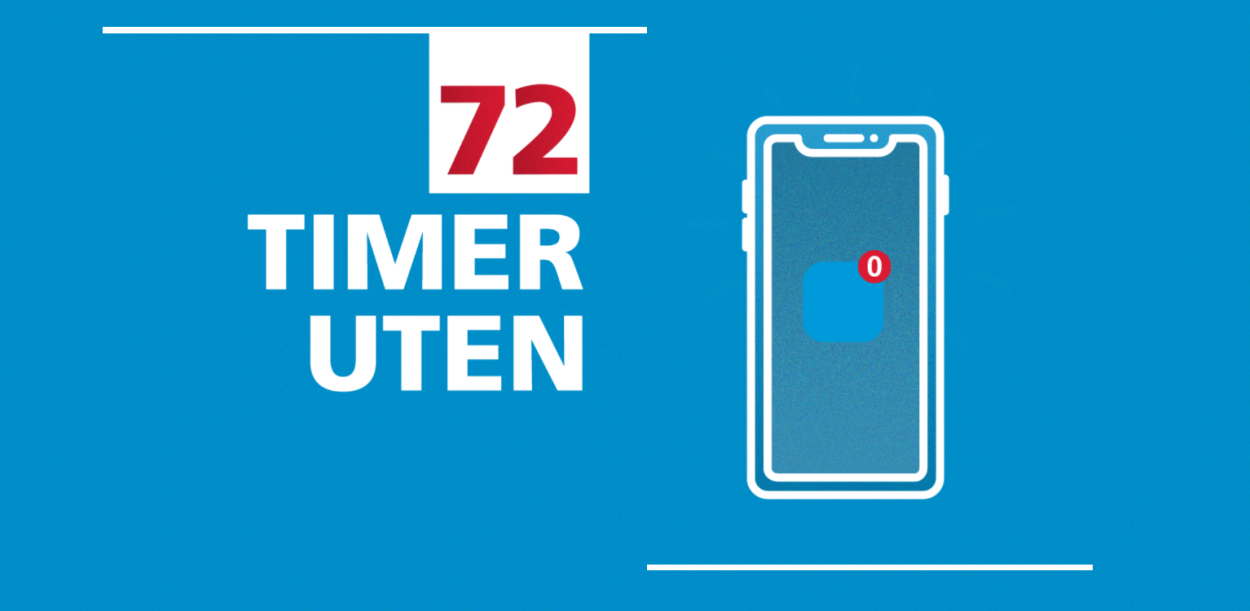- Do you have what you need at home, in case you have to manage without electricity, water and internet for 72 hours?
- Self-preparedness is about how each of us is equipped for a crisis. On this page we provide some good advice!
Self-preparedness: How to cope in a crisis
IN SHORT
Information in other languages

Har du ikke peis? Hvis strømmen går, kan du for eksempel holde varmen ved å kle på deg flere lag med vinterklær, og bygge et telt av varme pledd i stua!
We live in one of the world's safest countries. Nevertheless, crises can arise that mean that we as residents have to fend for ourselves for a few days. At least those of us who are healthy. In recent years, we in Norway have experienced pandemics and extreme weather events that have led to landslides and floods. Such events affect the everyday life of the citizens. When the crisis hits, the municipality must prioritize using its resources on those who need it most.
Why are we talking about 72 hours?
The Stavanger72 campaign is about you having to be able to take care of yourself and your loved ones for 72 hours (three days), in the event that the power goes out, the water disappears, mobile coverage and the internet fail, or some other kind of crisis occurs. This is what is called self-preparedness. If as many people as possible ensure good self-preparedness and have a small stock at home, we create a more robust society.
Have a stock at home
If the power goes out or you are isolated by the weather or other conditions, you need to be able to take care of yourself for a few days. To cover basic needs for 72 hours, you need heat, water, food, necessary medicines, sanitary items and the ability to stay informed about what is happening.
Everyone should have this at home:
- Drinking water: 3 liters of water per person per day (for drinking and cooking)
- Flashlight/headlight with extra battery
- Matches and candles
- First aid kit and medicines you are using.
- Long-lasting food, e.g. pasta, shortbread and canned goods. Remember the can opener!
- Storm kitchen and extra gas
- Warm clothes (the house gets cold quickly if the power goes out)
- Warm blankets/sleeping bag
- Cash (in case bank and payment terminals do not work)
- Tools: Hammer, nails, utility knife and duct tape for small repairs in the house, if something should be damaged in extreme weather.
- Keep warm with alternative heat sources (wood, gas or kerosene stove). A good rule of thumb is 30 liters of wood per day.
- Keep your mobile phone charged with a battery-powered mobile charger (emergency charger) and/or USB charger for the cigarette lighter socket in the car.
- Fire extinguisher
- Radio with battery
- Toiletries, hand sanitiser, mask and rubbish bags (for emergency toilet) for necessary hygiene.
- It is recommended to have iodine tablets for children and adults under 40, pregnant and breastfeeding women. Purchased at a pharmacy and taken according to the advice of the authorities.

Also consider whether you should have:
- Equipment for baby (baby food, formula, diapers, wet wipes for 72 hours)
- Copies of passports, driving licenses and contact lists
- Food and water for the family pet
Useful to have during a crisis
- Card and board games that make the time pass
- Chocolate, nuts and other energy
- Favorite toys and stuffed animals

Get even more tips from the Directorate for Community Safety and Emergency Preparedness: www.sikkerhverdag.no/en
How to store water
Buy water jugs made of food-grade plastic, and clean the containers well with Zalo or the like, before long-term storage of water. Disinfect the containers annually with a little chlorine. Rinse well and refill for new long-term storage. Read more about storing water here
Here you can keep up to date
Good sources of information during a crisis:
Plan in time - create your own contingency plan
Make your own plan of your closest contacts, even those who live far away. Also think through whether there is anyone in your immediate environment that you should include on the list. You can print out the plan you make and keep it on paper in case the mobile network disappears. Write down telephone numbers, and agree in advance different places where you can meet in crisis situations. It may happen that you have to meet in other places than at home.
We have created a template in Microsoft Word that you can use for your own plan. (Norwegian only)

Shelter in Stavanger
Public shelters are built to be able to provide protection to the population in an emergency situation. Stavanger municipality has 11 shelters:
|
Public shelters |
Address |
Capacity |
|
Tjensvoll I |
Olav Liljekranstien 20 |
380 |
|
Tjensvoll II |
Hallingstien 38 |
380 |
|
Storaberget |
Lower Storaberget |
5000 |
|
The village school south |
Jupiterveien 30 |
220 |
|
The village school north |
Ishallveien 32 |
200 |
|
Stavanger gymnasium |
Rector Oldensgate 2 |
240 |
|
Lagårdsveien |
Lagårdsveien 77 |
500 |
|
Paradise |
Paradise 22 |
820 |
|
Beachside (parking space) |
Nedre Strandgate 33 |
4000 |
|
Valberg (parking lot) |
Skagenkaien 29 |
5430 |
|
Tastavarden fjellhall |
Eskelandsveien 35 |
3140 |
See a map of public shelters here and read more at the Civil Defense.
In addition, there are a large number of private shelters. These are built for those who normally stay on the property; for example schools, shops, businesses and meeting rooms.
Frequently asked questions
Why is self-preparedness important?
Norway is one of the world's safest, most stable and most modern countries. We are used to most things working as they should. We wake up in a warm home with clean tap water and mobile internet. It has also made us vulnerable. Climate change contributes to more extreme weather, which can, among other things, affect the supply of water, electricity and mobile networks. Therefore, we should already now think about how we can best prepare ourselves should something happen.
In a crisis situation, help must go to those who need it most. It is therefore important that everyone prepares for a crisis, so that as many as possible can fend for themselves for up to three days. In addition to looking after yourself and your family, you should think about whether there are others around you who might need your help in a crisis. We are all an important part of society's preparedness.
What crises should I prepare for?
Extreme events can cause a crisis that can have major consequences. The power can go out, the mobile network can stop working, the water supply can stop, the water can be polluted, roads can be closed, and the supply of goods can stop. If you prepare, you are better equipped to face such challenges.
How do I know when there is a serious crisis?
In the event of crises, accidents and extreme weather, it is important that you have access to official information about what is happening and what you should do. NRK P1 must ensure information to the public in the event of a crisis.
Some tips to ensure good access to important information:
- Have a DAB radio that runs on batteries.
- Extra set of batteries.
- If you have a car, this can be used to listen to the radio and to charge your mobile phone
In special situations, Stavanger municipality can notify the population via SMS.
The Civil Defence's warning system with sirens must alert the public in the event of acute danger. When the typhoons hoot in three series with a one-minute pause between the series, it means "important message - listen to the radio" If you hear this signal, seek information. Via radio (NRK p1), television and social media, you will receive information about what is happening and how to behave. The Civil Defence's warning system is used in both war and peace.
Where can I find the nearest public shelter?
Public shelters are built to be able to provide protection to the population in an emergency situation. Stavanger municipality has 12 shelters, see a map of public shelters here and read more at the Civil Defense.
In addition, there are a large number of private shelters. These are built for those who normally stay on the property; for example schools, shops, businesses and meeting rooms.
What is the most important thing I can do to be prepared?
It means thinking through what you/your family need to cope in a crisis for up to three days. Feel free to talk together about what is good to have in the house and what you should take with you if you have to evacuate. See the list of recommended food/equipment and adapt this to your needs.
Do I have to buy iodine tablets?
Yes, if you are under 40, pregnant, breastfeeding or have children under 18 living at home. The authorities recommend that you have iodine tablets ready at home. The tablets should only be taken on the advice of the authorities. Iodine tablets can be bought without a prescription at the pharmacy. In the event of, for example, a nuclear accident, radioactive iodine can be spread through the air, and taken up via the thyroid gland when you breathe in contaminated air and/or consume contaminated food or drink. By adding stable iodine (Jodix), the absorption of radioactive iodine in the thyroid gland is blocked. The risk of getting cancer in the thyroid gland is thus reduced. This also applies to pregnant and breastfeeding women.
The tablets should only be taken on the advice of the authorities. At the same time, advice will often be given to stay indoors for up to 2 days. It is therefore important to have the tablets stored at home. Iodine tablets can be bought without a prescription at a pharmacy and cost around NOK 250 for 10 tablets.
All schools and kindergartens in Stavanger municipality have iodine tablets stored for distribution during school hours. The iodine tablets are only distributed on the advice of the authorities.
How long does stored water last?
Water stored in clean, tight packaging has an almost unlimited shelf life. Feel free to replace the water once a year. The water must be kept cold, dark and frost-free.
How long does water have to boil to become clean?
If there is a suspicion that the water may contain health-threatening microorganisms, and that the water may therefore cause illness, you will be advised to boil the water. The water must then boil for 1 minute.
Where can I get information if electricity and internet are lost for a long time?
You are recommended to have a battery-powered DAB radio. NRK has a responsibility for preparedness and, together with the Norwegian Civil Defence's typhoon facility, will provide the necessary information to the population in a national crisis or disaster. Therefore, listen to NRK P1. In a long-term crisis where electricity and internet are lost over time, it may be necessary for the municipality to set up a separate center that you can visit to get the necessary information.